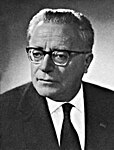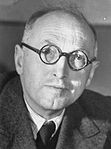Italian general election, 1963
|
|
|||||||||||||||||||||||||||||||||||||||||||||||||
|---|---|---|---|---|---|---|---|---|---|---|---|---|---|---|---|---|---|---|---|---|---|---|---|---|---|---|---|---|---|---|---|---|---|---|---|---|---|---|---|---|---|---|---|---|---|---|---|---|---|
|
|||||||||||||||||||||||||||||||||||||||||||||||||
|
All 630 seats to the Italian Chamber of Deputies and 315 (of the 321) seats to the Italian Senate |
|||||||||||||||||||||||||||||||||||||||||||||||||
| Turnout | 92.9% | ||||||||||||||||||||||||||||||||||||||||||||||||
|
|||||||||||||||||||||||||||||||||||||||||||||||||
 
Legislative election results map. Light Blue denotes provinces with a Christian Democratic plurality, Red denotes those with a Communist plurality, Gray denotes those with an Autonomist plurality.
|
|||||||||||||||||||||||||||||||||||||||||||||||||
|
|||||||||||||||||||||||||||||||||||||||||||||||||
Amintore Fanfani
Christian Democracy
Giovanni Leone
Christian Democracy
General elections were held in Italy on April 28, 1963, to select the Fourth Republican Parliament. It was the first election with a fixed number of MPs to be elected, as decided by the second Constitutional Reform in February 1963. It was also the first election which saw the Secretary of Christian Democracy to refuse the office of Prime Minister after the vote, at least for six months, preferring to provisionally maintain his more influent post at the head of the party: this fact confirmed the transformation of Italian political system into a particracy, the secretaries of the parties having become more powerful than the Parliament and the Government.
The pure party-list proportional representation had traditionally become the electoral system for the Chamber of Deputies. Italian provinces were united in 32 constituencies, each electing a group of candidates. At constituency level, seats were divided between open lists using the largest remainder method with Imperiali quota. Remaining votes and seats were transferred at national level, where they was divided using the Hare quota, and automatically distributed to best losers into the local lists.
For the Senate, 237 single-seat constituencies were established, even if the assembly had risen to 315 members. The candidates needed a landslide victory of two thirds of votes to be elected, a goal which could be reached only by the German minorities in South Tirol. All remained votes and seats were grouped in party lists and regional constituencies, where a D'Hondt method was used: inside the lists, candidates with the best percentages were elected.
During the First Republic, the Christian Democracy slowly but steadily lost support, as society modernised and the traditional values at its ideological core became less appealing to the population. Various options of extending the parliamentary majority were considered, mainly an opening to the left (apertura a sinistra), i.e. to the Socialist party (PSI), which after the 1956 events in Hungary had moved from a position of total subordination to the Communists, to an independent position. Proponents of such a coalition proposed a series much-needed "structural reforms" that would modernize the country and create a modern social-democracy. In 1960, an attempt by the right wing of the Christian Democrats to incorporate the neo-fascist Italian Social Movement (MSI) in the Tambroni government led to violent and bloody riots (Genoa, Reggio Emilia), and was defeated.
...
Wikipedia



